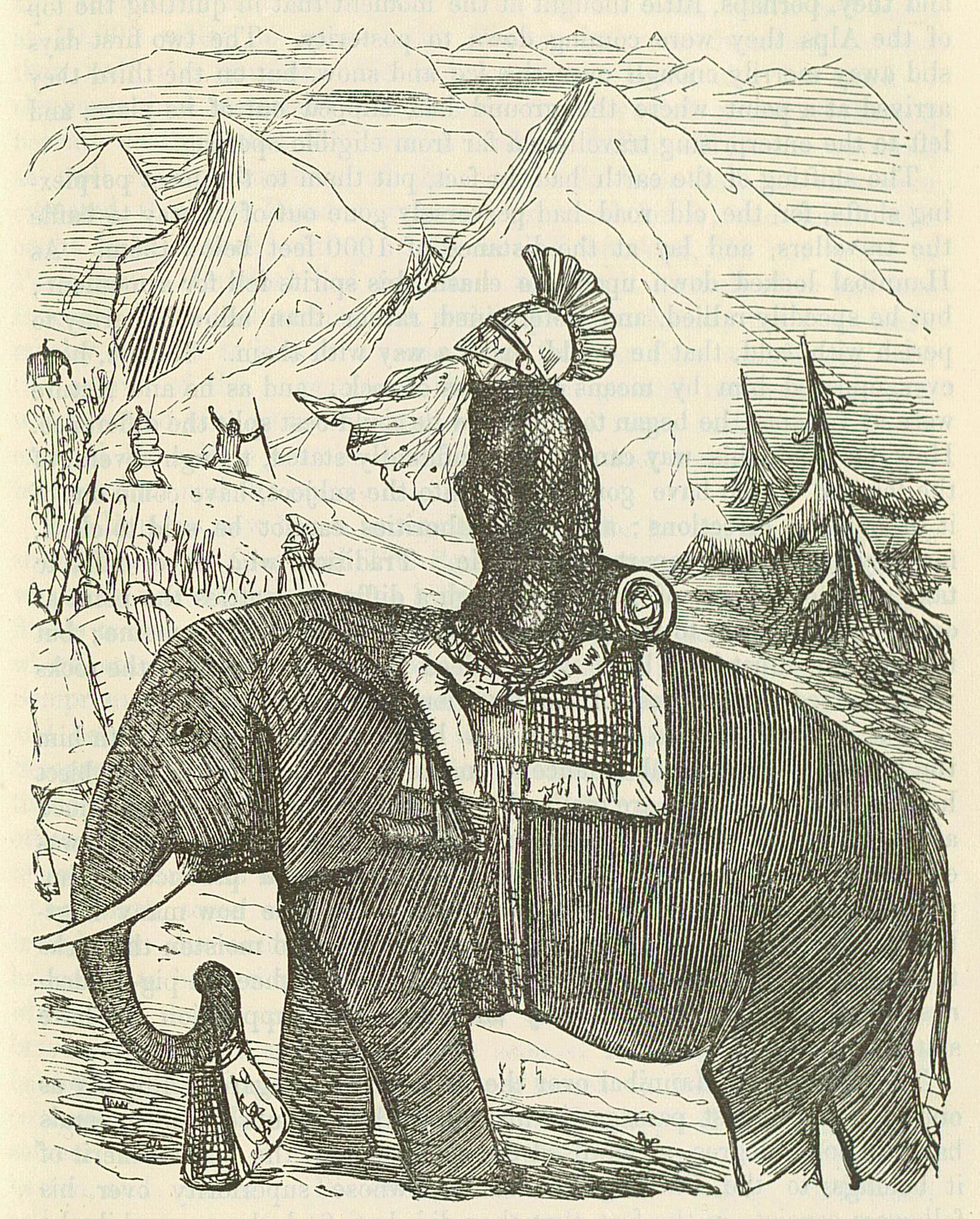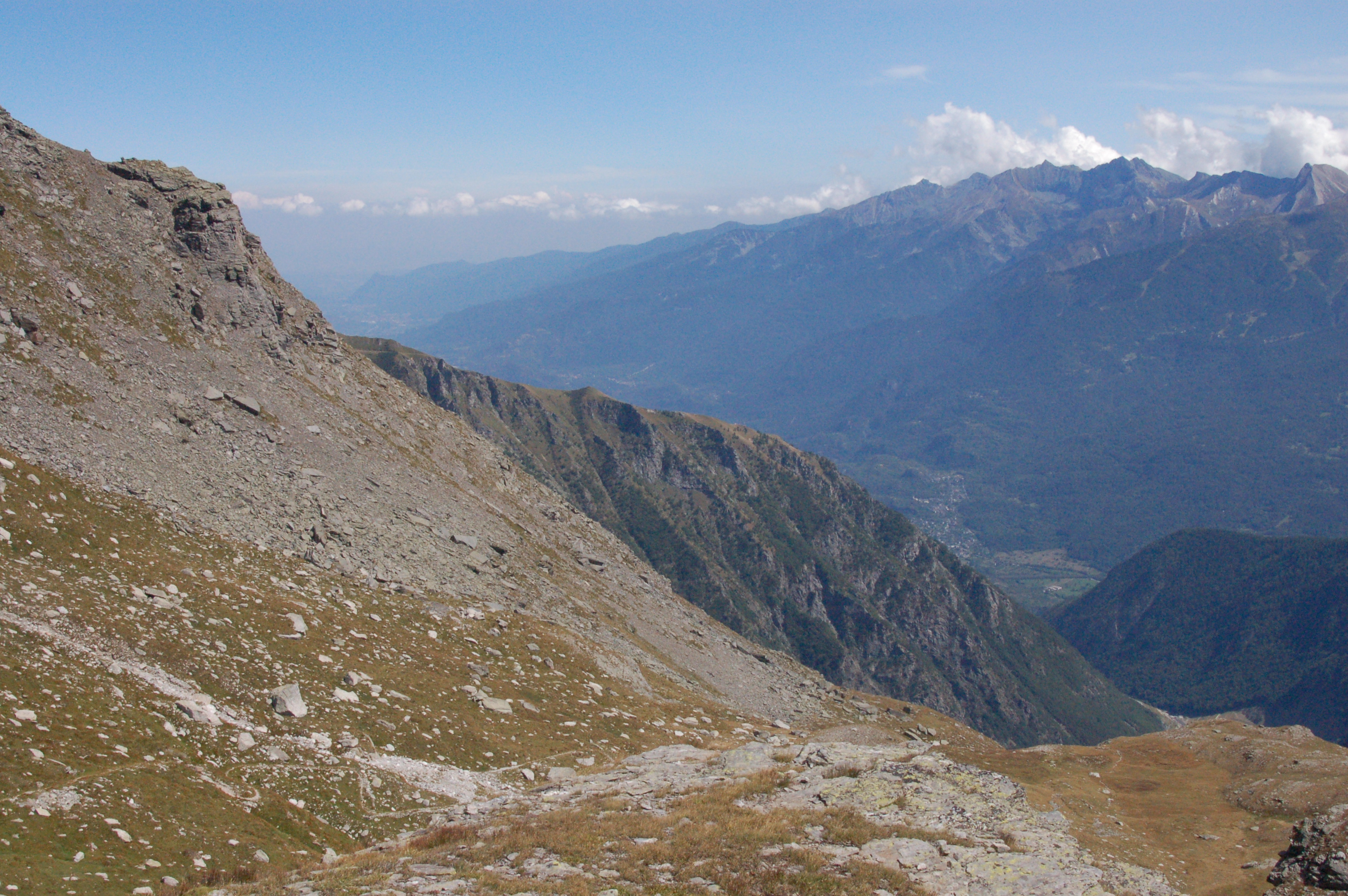Dawn considers the surprising story of a twentieth-century elephant and Hannibal’s crossing of the Alps.
I am currently beginning to make the first cautious steps into a new area of research. During my PhD, which focussed on sixteenth- and seventeenth- century responses to mountains, I trawled through the first thirty or so volumes of the Alpine Journal in search of references by modern mountaineers to early modern (c.1500-1750) mountain engagements. Along the way, I noticed a considerable number of references not only to early modern accounts of mountain endeavour, but also to classical ones. With my copies of the Alpine Journal now sitting happily alongside various Loebs, it occurs to me that it may well be time for me to revisit the ways that mountaineers from the mid-nineteenth century onwards thought and wrote about classical mountain engagements.
Unsurprisingly, the ancient mountain incident to attract most modern attention was that of Hannibal’s crossing of the Alps – complete with a massive army and a number of elephants. According to Livy, Hannibal began the journey over the Alps by exhorting his men to believe in their ability to overcome the challenges of nature:
What else did they think that the Alps were but high mountains? They might fancy them higher than the ranges of the Pyrenees; but surely no lands touched the skies or were impassable to man. (History of Rome 21: 30.7-8).
The journey that followed, as described by Polybius and Livy, was trying in the extreme, with the army fending off attacks from local tribesmen, and facing a narrow, snow-choked pass at the high point of their route. Although Hannibal was ultimately defeated, his crossing has gone down in history as a remarkable military – and mountaineering – achievement.

The precise route which Hannibal took has long been a subject of debate – not just among historians, but also among historically-minded mountaineers. In 1883, Douglas Freshfield, who would later become president of the Alpine Club, dedicated thirty-three dense pages in the Alpine Journal to the question of the location of Hannibal’s pass, reading Polybius’ account against his own first-hand experience of the Alps. [1] The discussion rumbled on down the decades, with Sir Gavin de Beer, in his Alps and Elephants (1955), reserving special criticism for the ‘false argument, special pleading, sheer absurdity, and… specious statements’ uttered by writers in the Alpine Journal in response to an earlier volume on the subject. [2]
It was, of course, only a matter of time before the debate left the confines of the written page and moved into the mountains themselves, which leads me to the curious episode of Alpine history which I stumbled upon this morning whilst seeking out engagements between Alpinists and the ancient past. That episode is none other than the ‘British Alpine Hannibal Expedition’ which took place in 1959. The expedition set out to test the assumption that Hannibal’s route led him up the Col de Clapier, a route which matched many of the topographical elements described in Polybius. They wished to test the route to see whether the timings recording in Polybius between key waymarkers – namely a patch of ‘bare rock’ which they believed they had identified, and the summit of the pass – matched those of a modern reconstruction. The difficulty, as expedition-member A. Richard Jolly put it in his report to the Alpine Club three years later, was that
Consideration of this… was obviously a matter of elephant climbing speeds and of relative distances along the valley and up the slopes. While distances are easily measured, understandably little is known about elephant climbing capabilities above 5,000 feet! [3]
The solution to this was none other than to acquire an eleven-year old female Indian elephant named Jumbo, to train her, and to take her on a trans-alpine march along the supposed route of Hannibal’s pass. Although they stopped five miles before the pass, wary – as, they argued, Hannibal might not have been – to take undue risks with their elephant, her performance gave ‘no reason to doubt’ that the theorised route ‘would be quite consistent with the climbing capabilities of Hannibal’s elephants’. The expedition also resulted in several book-length publications, including the groan-inducing pun of a title by John Hoyte, the expedition leader, of Trunk Road for Hannibal (1960). An account of the expedition, along with photographs including one of Jumbo, charmingly, dressed in ‘boots’ and ‘jumper’, can be found on Hoyte’s website.

In some respects, this episode could be cited as an early and ambitious example of experimental archaeology. It could also be shrugged off with a smile as a fairly amusing, impressive, but not particularly meaningful incident, representative of the lengths to which scholar-mountaineers might go to prove their pet theories. However, I think it is also representative of a long-standing and fascinating theme within nineteenth- and twentieth-century mountaineering discourse: of mountaineers, for all their modernity, enthusiastically engaging with the classical past. Precisely what other forms that engagement took – in addition to taking an elephant named Jumbo 7,000 feet up a mountain – is what I hope to spend the next few months finding out.
[1] Douglas W. Freshfield, ‘The Pass of Hannibal’, The Alpine Journal Vol.XI, No. 81, 267-300.
[2] Sir Gavin de Beer, Alps and Elephant’s: Hannibal’s March (London, Geoffrey Bles, 1955).
[3] A. Richard Jolly, ‘Hannibal’s Pass: Results of an Empirical Test’, The Alpine Journal Vol.LXVII, 243-249.
Illustrations: John Leech, ‘Hannibal Crossing the Alps’ from The Comic History of Rome (c.1850); the Col de Clapier, by Edward Boenig, CC BY-SA 2.5.
